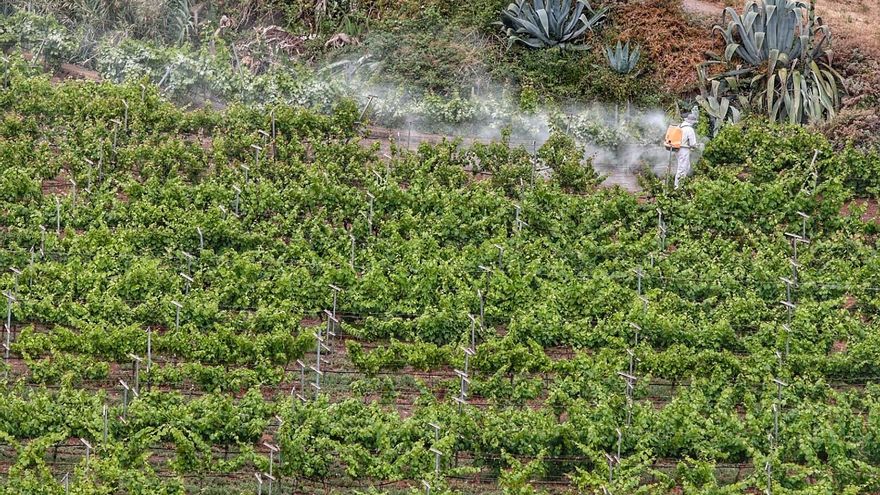
Phylloxera infiltrates the vineyards of Tenerife. This pest, first detected in Spain in 1870, had never affected Canarian vines until now, having appeared in a semi-abandoned agricultural area on the coast of La Laguna, specifically in Valle de Guerra.
Considered the Covid of the vine, it is an aphid native to North America that has become one of the worst pests affecting grape plantations. In the Iberian Peninsula, the first cases were recorded in Porto, Malaga, and Girona. This aphid primarily attacks the roots of plants, causing significant damage.
When phylloxera attacks, it leads to the formation of galls or knots on the roots, where the insects feed by sucking the sap. A second effect relates to the decay of the roots, which causes the emergence of fungi and bacteria that generate infections and necrosis. Once the insect has settled in the root, it causes a progressive weakening of the plant, which over time dies if drastic measures are not taken. Another visible damage occurs in the leaves.
This aphid can be found in either winged or sexual forms, as gallicola [on the leaves] and radicicola [on the roots of the vine]. The decay or decomposition phase is relatively quick once a sting has occurred, spreading through the air and soil. It can also adhere to the tools used by the farmer to move from place to place. The most abundant variety in Europe is the radicicola. These parasites can reach a size of 1 to 1.25 millimetres in length.
What are the damages
Immediately, the affected plants and their roots were removed, which were disinfected and eliminated.
In parallel, a security zone has been established around the outbreak, where prospectings are already being conducted in all vineyards, both commercial and non-commercial, and phytosanitary measures will be implemented aimed at its eradication.
Mobilised sector
In the last three days, there have been meetings between the head of Agriculture at the Canary Islands Government, Narvay Quintero, and the Cabildo of Tenerife to agree on measures that will be adopted to combat phylloxera. Members of customs and representatives from the island’s wine regulatory councils have also participated in the meetings.
These meetings will extend to all islands. Furthermore, this Wednesday a meeting is scheduled at the headquarters of the Ministry with representatives of the Canary Islands Government, Cabildo, Agricultural Professional Organisations, Regulatory Councils of the DOP of Tenerife Wines and wineries to assess the evolution of the work. The government and Cabildo have published a technical document with guidelines for detection and action.
Farmers, if they detect compatible symptoms, must immediately report them to the Agricultural Extension Agencies of the Cabildo or to the Ministry of Agriculture, Livestock, Fisheries and Food Sovereignty.
The Canary Status
In Canary Islands, the status regarding phylloxera has been officially “absent”, a condition protected by the Order of 12 March 1987, which prohibits the importation of vine planting material (Vitis L.) —except for fruits and seeds— from any country, including mainland Spain.
Although in Europe it currently is not a widespread problem thanks to rootstocks, it remains a quarantine pest where it is not present, such as in Canary Islands, and so the objective of the measures is to eradicate the outbreak and preserve that status.















